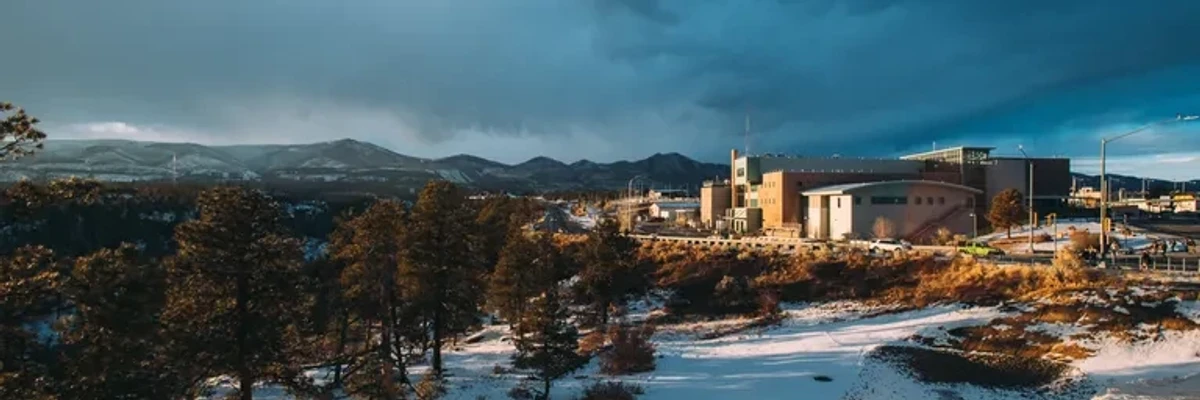In what advocates called a major win for frontline communities and the rule of law, a U.S. district court judge
ruled on Monday that the federal government could not move forward with producing plutonium pits—"the heart and trigger of a nuclear bomb"—at two proposed sites in New Mexico and South Carolina.
Instead, Judge Mary Geiger Lewis agreed with a coalition of nonprofit community groups that the Department of Energy (DOE) and the National Nuclear Security Administration (NNSA) violated the National Environmental Policy Act (NEPA) by failing to fully consider alternatives to producing the pits at New Mexico's Los Alamos National Laboratory and South Carolina's Savannah River Site (SRS). Now, the federal government must conduct a full environmental impact statement of how pit production would work at sites across the U.S.
"This is a significant victory that will ensure NEPA's goal of public participation is satisfied," attorney for the plaintiffs Ben Cunningham, of the South Carolina Environmental Law Project,
said in a statement. "Public scrutiny is especially important because the activities at issue here, by their very nature, result in the production of dangerous weapons and extensive amounts of toxic and radioactive waste. I hope the public will seize the upcoming opportunity to review and comment on the federal agencies' assessment."
"This is a victory for public transparency, and hopefully will result in alternative proposals that are more protective of the environment and affected communities around these sites."
Making plutonium pits means working with "extremely hazardous and radioactive materials," Nuclear Watch New Mexico, one of the groups behind the suit,
pointed out. As of 2018, the government had planned to produce at least 80 pits a year by 2030—30 or more in New Mexico and 50 or more in South Carolina.
Yet these pits are not intended to maintain the United States' existing nuclear weapons stockpile. Instead, they would be for future, experimental weapons that could not even be tested without violating the Nuclear Test-Ban Treaty. What's more, making the pits would cost U.S. taxpayers over $60 billion over the next three decades, and the Government Accountability Office (GAO) found that the NNSA has not made reliable cost estimates for production at the two proposed sites.
"The DOE and NNSA have been on the GAO's 'High Risk List' for project mismanagement and cost overruns for more than 30 years," said Jay Coghlan, the executive director of Nuclear Watch New Mexico. "Nevertheless, these agencies think they can proceed with their most expensive and complex project ever without required public analyses and credible cost estimates."
Coghlan continued: "Public scrutiny and formal comment under the National Environmental Policy Act have proven time and again to improve public safety and save taxpayers' money. A nationwide programmatic environmental impact statement [PEIS] on expanded plutonium pit production will hold DOE and NNSA accountable for just that."
It will also give local communities a chance to have a say in potentially dangerous projects being implemented near their homes. The plaintiffs were composed mostly of frontline groups: Savannah River Site Watch, Nuclear Watch New Mexico, Tri-Valley Communities Against a Radioactive Environment (CAREs), and the Gullah/Geechee Sea Island Coalition.
"Native Gullah/Geechees, including the Gullah/Geechee Fishing Association and Gullah/Geechee Sea Island Coalition members, rely on safe and healthy water in order to sustain ourselves and our community," said Gullah Geechee Nation Chieftess Queen Quet. "Therefore, it is critical that the public is fully aware of any and all potential negative impacts that projects will have on critical resources such as our water supplies and water bodies."
If the DOE and NNSA's plans had gone ahead, it would have been the first time that plutonium pits were manufactured at the Savannah River Site, at a facility which could cost between $11 and $25 billion to complete. However, Judge Lewis concluded that the agencies had not updated their plans to account for production at two sites at once and must therefore conduct a PEIS considering production at potential sites across the U.S. as well as the handling and disposal of waste.
"In our comments, it was repeatedly stressed that the agency violated the law by failing to take a hard look at alternatives for this 'two-site' plan," said Scott Yundt, executive director of the Livermore, California-based Tri-Valley CAREs. "Additionally, commenters pointed out the lack of inclusion in the environmental review of the other affected sites involved in the plan, chief among them Lawrence Livermore National Laboratory and the Waste Isolation Pilot Plant, where the scope of work and the corresponding impacts was largely left out of the analysis and, again, no alternatives were offered or analyzed as required by NEPA. The judge saw these violations clearly and ordered agencies do the analysis that should have been done at the outset. This is a victory for public transparency, and hopefully will result in alternative proposals that are more protective of the environment and affected communities around these sites."
Tom Clements, who directs Savannah River Site Watch and was also an individual plaintiff in the case, said the ruling was "a notable victory for the main argument in our lawsuit—that the NNSA's NEPA analysis on plutonium pit production was inadequate."
In addition, it provides a reprieve for the project's concerned neighbors.
"The design and construction work on the proposed SRS pit plant should be put on hold until the PEIS has been finalized," Clements said.
Dylan Spaulding, senior scientist at the Union of Concerned Scientists, also applauded the ruling.
"NNSA skirted the rules and now they are being held accountable—this is a victory for transparency," he said.
Spaulding added that he was unsure whether or not this would delay the planned plutonium pit production blitz.
"There are still a lot of environmental hazards and questions that need to be addressed," he said. "We should be pausing and thinking about that before this hugely expensive project goes forward."
This piece has been updated to included comments from Dylan Spaulding of the Union of Concerned Scientists.
